A pool sand filter plays a crucial role in maintaining clean and clear pool water by filtering out particles and contaminants.
In order to maximize the efficiency of your sand filter, it is essential to know how to clean a pool sand filter.
Cleaning a pool sand filter not only extends the life of the filter but also ensures that your swimming pool remains a safe and enjoyable environment.
Understanding your pool sand filter and the proper cleaning procedure is vital in keeping your pool water pristine.
There are two primary methods for cleaning a sand filter: backwashing and deep cleaning.
Becoming familiar with these techniques and necessary supplies for cleaning will enable you to effectively maintain your pool sand filter.
Key Takeaways
- Regular cleaning of your pool sand filter is indispensable for maintaining optimal water quality and extending filter life.
- Familiarize yourself with backwashing and deep cleaning methods to effectively clean your pool sand filter.
- Proper preparation and usage of necessary cleaning supplies will ensure successful maintenance of your pool sand filter.
How To Clean A Pool Sand Filter
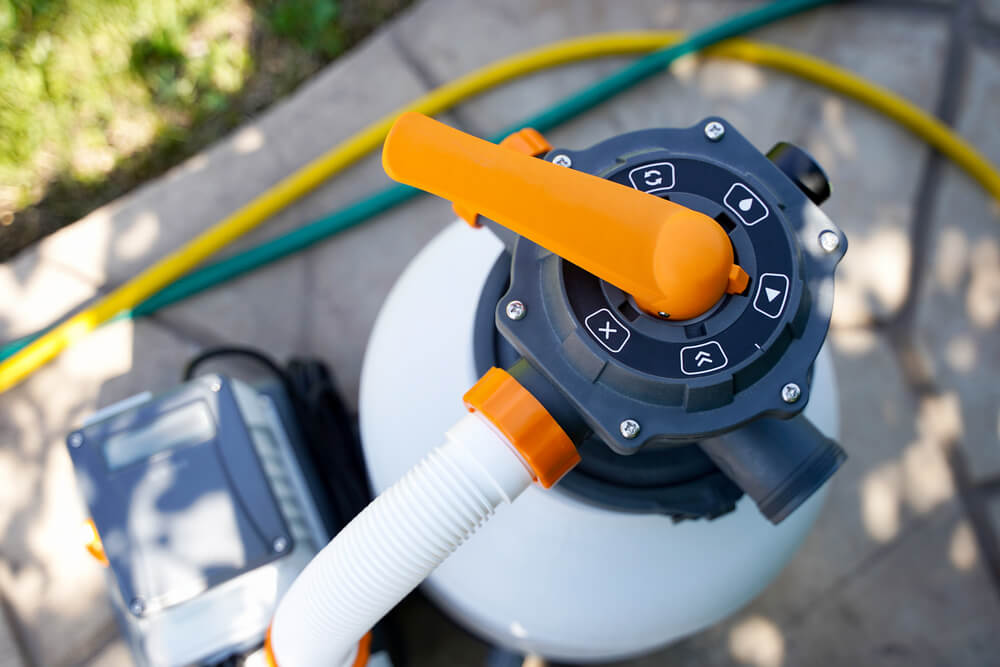
Basics of a Sand Filter
A sand filter is a type of pool filter that uses sand to trap and remove dirt, debris, and other contaminants from your pool water. Sand filters consist of a hollow tank filled with pool-grade sand and water.
As water passes through the sand bed, particles are caught in the spaces between the sand grains, thus cleaning the water. Over time, the trapped debris accumulates, requiring the filter to be cleaned.
This process is typically done by backwashing the filter, which reverses the water flow to flush out the trapped debris.
Key components of a sand filter include:
- Skimmer: collects surface debris and directs water into the filter
- Pump: circulates water between the pool and the filter
- Filter tank: houses the sand bed and water
- Multiport valve: allows you to control the settings and flow of water through the filter
Role of the Sand Filter in Pool Maintenance
The sand filter plays a crucial part in maintaining your pool by ensuring water clarity and cleanliness. In addition to trapping debris, sand filters also help maintain proper water balance by catching particles that could affect the water’s chemistry. Regular maintenance of your sand filter is essential for efficient and effective pool water filtration.
Here are some key aspects:
- Backwashing: Reversing the water flow periodically (usually weekly) to remove trapped debris from the sand bed.
- Deep cleaning: Occasionally required to thoroughly clean the sand filter of built-up dirt, algae, and other contaminants that may not be removed by backwashing alone.
- Sand replacement: Over time, the sand in your filter will wear down and become less effective. You’ll need to replace the sand every 3-5 years to ensure optimal performance.
By following these maintenance steps, you can keep your pool’s sand filter running efficiently and extend its lifespan, ensuring clean and clear water for you to enjoy.
Necessary Supplies for Cleaning

Before starting the process of cleaning your pool sand filter, it’s essential to gather all the necessary supplies. This will ensure a smooth and efficient cleaning process. Here’s a list of items you will need:
- Sand filter cleaner: Look for a quality sand filter cleaner from your local pool store. This chemical agent is specially designed to break down dirt, debris, and oils in the sand, ensuring a thorough cleaning.
- Backwash hose: A backwash hose will help you to drain the water efficiently from the filter during the backwashing process. Make sure the hose is long enough to reach the designated drainage area.
- Pressure gauge: Checking the pressure gauge on your sand filter regularly is crucial to know when it’s time for a cleaning. A pressure differential of 16 and 20 psi indicates that a clean is due. If your filter has both an inlet and outlet pressure gauge, monitor both to get an accurate reading.
- Owner’s manual: It’s always a good idea to have the owner’s manual for your specific pool filter on hand. This will guide you through any specifics for your particular filter model, providing useful tips and troubleshooting advice.
- Basic tools: Some filters might require you to disassemble certain components for thorough cleaning. Having a few basic tools like a screwdriver and pliers handy will save time and frustration.
Once you have gathered all the necessary supplies, you are ready to begin the cleaning process. Remember to follow the manufacturer’s instructions in your owner’s manual and work methodically to ensure the best results for your pool’s sand filter.
Preparation for Cleaning

Safety Measures
Before you start cleaning your pool sand filter, it is essential to prioritize your safety. Make sure to turn off your pool pump to prevent any damage to the plumbing and multiport valve.
Always wear protective gear such as gloves and goggles when handling sand filter cleaning solutions to avoid skin and eye irritation.
Identifying When to Clean
To determine when it’s time to clean your sand filter, check the pressure gauges. If your filter has both an inlet and outlet pressure gauge, a pressure differential of 16 to 20 psi indicates that it’s time to clean the filter.
Regularly monitoring these gauges will help you maintain the efficiency of your sand filter and keep your pool clean.
By following the safety measures and identifying the right time to clean your pool sand filter, you can ensure optimal performance and a crystal-clear pool for you and your family to enjoy.
Steps to Clean a Pool Sand Filter
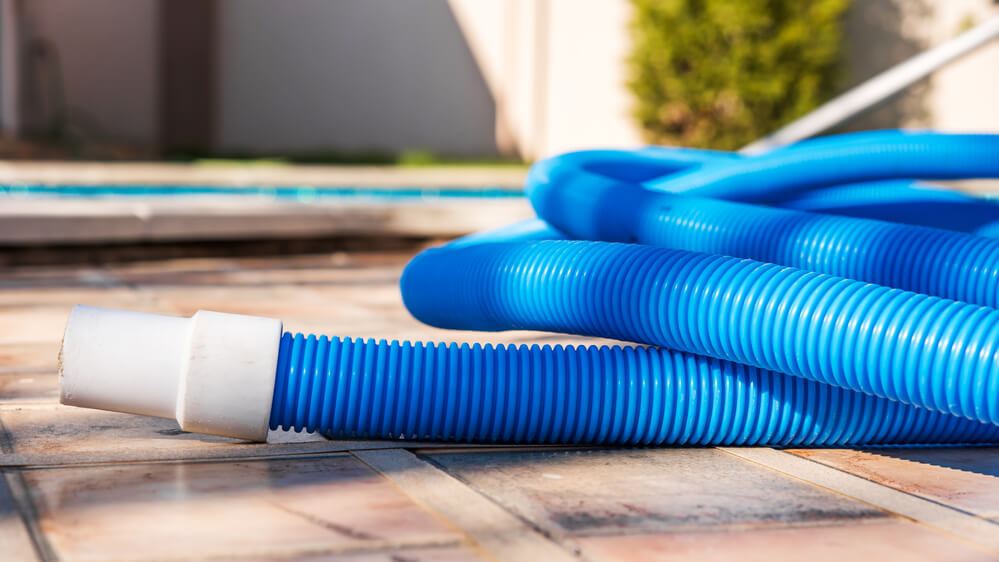
Cleaning your pool’s sand filter is crucial for maintaining water quality and preventing algae build-up. Follow these essential steps to keep your sand filter functioning properly:
Turn Off The Pump
The first step in the cleaning process is to switch off your pool pump. This prevents any harm to the pump and ensures your safety while cleaning the filter. Disconnect the pump and any electrical connections that power it.
Backwash Your Filter
Backwashing is an essential method for cleaning your sand filter, as it removes built-up dirt and debris. To backwash your filter:
- Locate the backwash valve on your filter system.
- Turn the valve handle to the “backwash” position.
- Turn your pool pump back on and allow water to flow through the filter in the reverse direction for about 3-5 minutes. You’ll notice the water in your sight glass or backwash hose becoming clear when all debris has been flushed out.
- Turn off the pump when backwashing is complete.
It’s worth noting that backwashing should be done every few weeks or when the pressure gauge indicates that the filter is dirty.
Rinse Your Filter
After backwashing, the sand in your filter may be loose and unsettled, leaving the possibility of dirt finding its way back into your pool. To avoid this:
- Turn the valve handle to the “rinse” position.
- Turn on your pool pump and let it run for about 30 seconds to 1 minute.
- This process will help to compact the sand and remove any remaining debris.
Turn off the pump once the rinsing process is finished.
Reset Valve to Filter Mode
In the final step, reset your filter valve to its regular filtering position:
- Set the valve handle back to the “filter” position.
- Reconnect the pump and any electrical connections necessary.
- Turn the pump back on and ensure that water is flowing correctly through the pool’s filtration system.
Congratulations, you’ve successfully cleaned your pool sand filter! By following these steps periodically, you’re ensuring the longevity of your sand filter and keeping your pool water crystal clear.
Tips to Enhance Sand Filter Performance
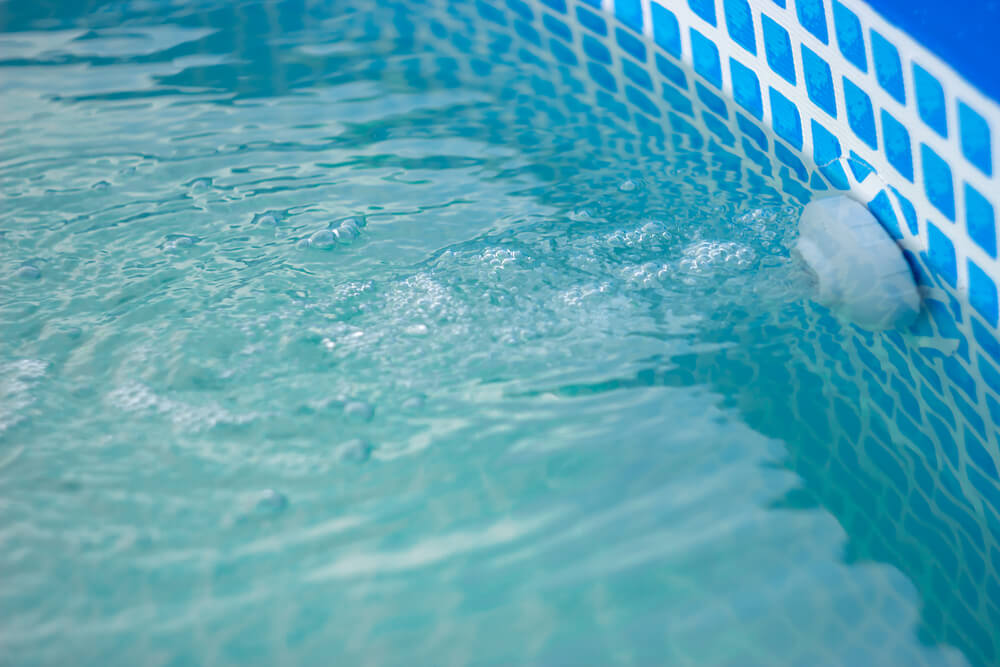
To maintain a clean and efficient pool filtration system, follow these tips to enhance the performance of your sand filter:
- Backwash Regularly: Backwashing is an essential part of sand filter maintenance. When the pressure gauge on your filter indicates an increase of 8-10 psi above the normal operating pressure, it’s time to backwash your filter. This process reverses the water flow and flushes out accumulated dirt and debris from the sand bed.
- Use Filter Aids: Adding filter aids like diatomaceous earth (DE) or aluminum sulfate (alum) can significantly improve the filter performance. Adding 1-3 cups of DE powder to your sand filter during backwashing can make it 4 times more effective by filtering out particles down to 3 microns. Alternatively, you can use 1 pound of alum per square foot of pool filter area to capture small particles that would typically pass through the filter.
- Clean the Sand Bed: Over time, sand can get compacted and form channels that decrease the filtration capacity. To avoid this, turn off the pool pump, open the filter, and gently rake the surface of the sand bed with a tool like a broom handle to break up the compaction. Do this every few months for optimal performance.
- Replace Old Sand: The sand in your filter will eventually become less effective at trapping particles as it wears down. It’s recommended to replace the sand in your pool filter every 5-7 years. This will ensure consistent and efficient filtration.
- Keep an Eye on Pressure Gauges: Routinely check the pressure gauges on your sand filter. If there is a significant difference between the inlet and outlet pressure gauges (16-20 psi), it may be time to clean your filter.
By implementing these tips, you will enhance your sand filter’s performance and maintain a clean and healthy pool environment.
Precautions During Pool Sand Filter Cleaning
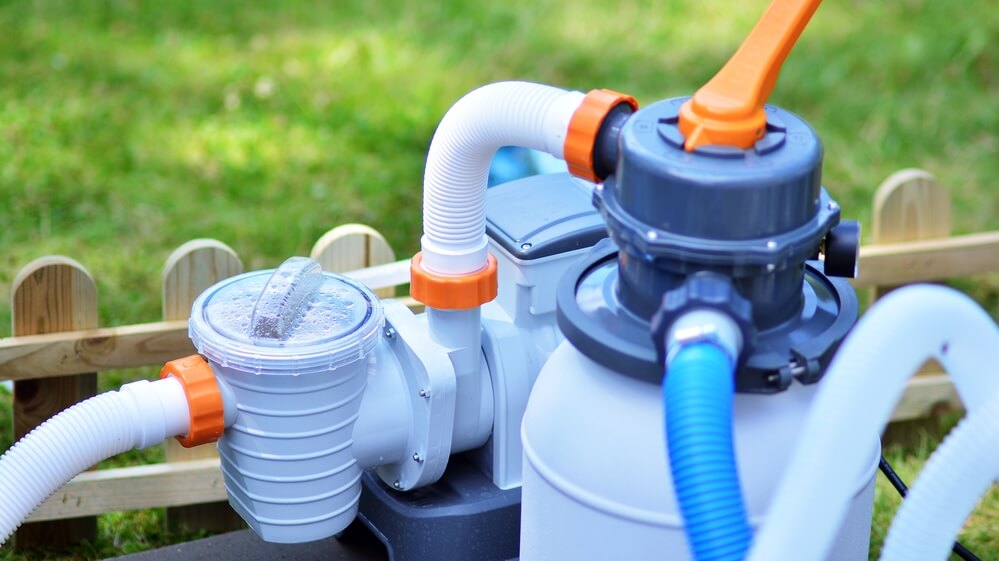
Before you start cleaning your pool sand filter, it’s essential to take some precautions to ensure the process is safe and effective. Following these guidelines will help protect your pool equipment and maintain the efficiency of your sand filter.
First, always turn off your pool pump before performing any maintenance on your sand filter. This prevents damage from occurring to the plumbing as well as the multiport valve.
Next, make sure you have all the necessary tools and materials for the cleaning process. This may include a sand filter cleaner, a backwash hose, and the owner’s manual for your pool filter.
Having everything on hand will save time and ensure you’re prepared for each step of the cleaning process.
When backwashing your filter, be aware of the water pressure in your system. The pressure gauge on your filter will let you know when it’s time for a cleaning. As a general guideline, a pressure differential of 16 to 20 psi means it’s time to clean your filter.
Additionally, you should perform a backwash clean any time your filter pump reaches a water pressure of 10 psi over its average operating pressure level.
It’s also essential to follow your pool filter manufacturer’s instructions when using chemical cleaning solutions. This will prevent any damage to your pool equipment and ensure that the cleaning process is thorough and effective.
Lastly, always clean your sand filter in a well-ventilated area and dispose of any waste water according to local regulations. Proper disposal prevents harm to the environment and complies with local guidelines.
By taking these precautions, you can ensure the safety and effectiveness of your pool sand filter cleaning process.
Troubleshooting Common Issues
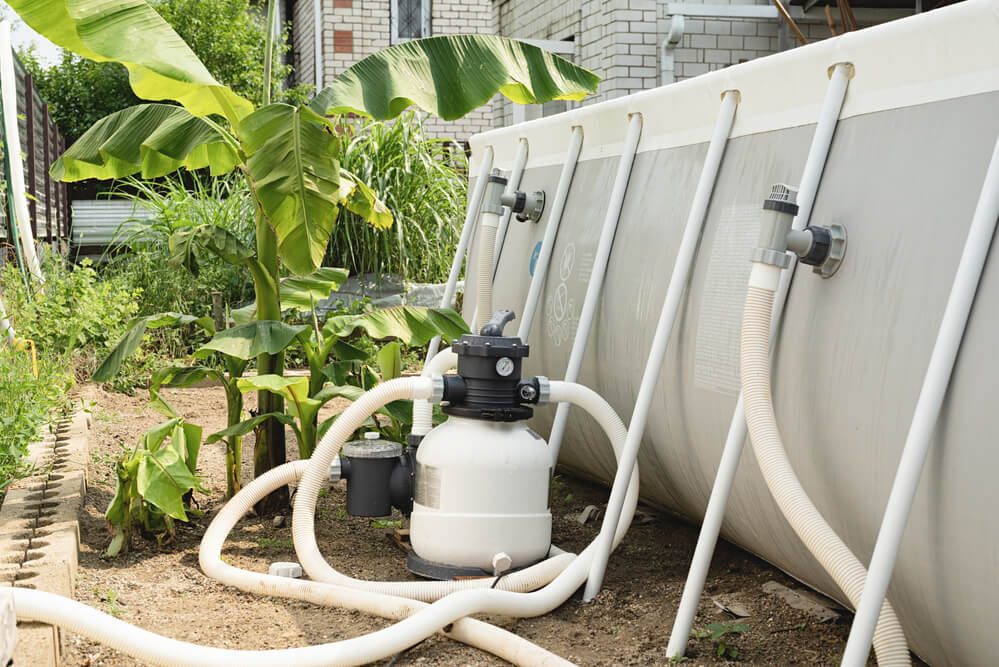
Keeping your pool’s sand filter clean and functioning properly requires you to be aware of common issues that may arise. Fortunately, with a bit of knowledge and some practical tips, you can troubleshoot most problems and maintain a sparkling clean pool.
One of the most frequent problems is a leaking sand filter. This issue can be caused by ill-fitting O-rings, cracked filter tanks, loose plumbing, or worn-out gaskets. To address this, carefully inspect your sand filter for any cracks or damage in the tank or individual pieces, and replace as needed.
Another common issue is sand blowing back into the pool. It can be caused by overfilling the filter tank or by broken or bad laterals. To fix this, ensure that you fill your sand filter with the correct amount of sand to avoid overfilling. If you suspect bad laterals, you’ll need to remove all the media from the pool filter to check their condition and replace them if necessary.
Regular maintenance is essential for the efficient operation of your sand filter. Always backwash the filter for 3-5 minutes before cleaning to ensure that the large organic debris is removed.
You should also check the pressure gauge regularly. If the pressure is higher than the normal operating range, it’s time to backwash the filter to restore proper water flow.
Lastly, make sure to visually inspect your sand filter regularly to check for wear and tear or any unusual signs. This will help you catch potential issues early on and ensure your pool filter is always in top shape.
By following these troubleshooting tips and addressing any problems swiftly, you can keep your pool sand filter functioning effectively and maintain a clean, enjoyable swimming environment.
Maintaining Your Pool Sand Filter
Regular Inspection
To keep your pool sand filter working efficiently, it is essential to regularly inspect and monitor its performance. Start by checking the pressure gauges on your filter.
If there is a noticeable difference in the inlet and outlet pressure (typically between 16 and 20 psi), it’s time to clean your filter source.
In addition to pressure checks, remember to perform backwashes when the filter pump’s water pressure reaches 10 psi over its average operating pressure level source.
Monitor your pool’s water quality as well. If the water appears cloudy or dirty, it may be indicative of an issue with the sand filter that requires prompt attention.
Timely Replacement
Even with regular maintenance and cleaning, your sand filter will eventually need to be replaced. The sand in the filter should be replaced approximately every 5 to 7 years, depending on the usage and the manufacturer’s recommendations.
Inspect the sand regularly for visual signs that it may be time for a replacement, such as large clumps, uneven distribution, or an ineffective backwash cycle.
By performing regular inspections and timely replacement of your pool sand filter’s components, you can ensure that your pool remains clean and safe for everyone to enjoy.
Frequently Asked Questions
What is the proper method to backwash a pool sand filter?
To backwash a pool sand filter, start by turning off your pool pump. Set the multiport valve to the “backwash” setting and attach a backwash hose. Turn on the pump and let the water flow through the hose for 3-5 minutes or until the water appears clear.
Turn off the pump, switch the valve back to “filter” setting and turn the pump back on. This process helps to remove any accumulated debris from the filter. For more detailed steps, refer to this step-by-step guide.
How often should I change the sand in my pool filter?
The sand in your pool filter should be replaced every 5-7 years, depending on the usage and maintenance frequency. Regular backwashing and proper cleaning can extend the life of the sand.
However, if there are constant issues with water clarity after trying all other troubleshooting methods, it might be time to change the sand.
What are the best cleaning solutions for a sand filter?
Cleaning solutions specifically designed for sand filters can be purchased from your local pool store. Make sure to choose a product that is compatible with your filter model.
Follow the instructions provided on the label and in your owner’s manual for the best results.
Are there any maintenance checklists for sand filter upkeep?
Regular sand filter maintenance is essential for keeping your pool water clean and clear.
Here is a basic checklist you can follow:
- Check and clean the skimmer basket weekly.
- Backwash the sand filter every two to four weeks or when the filter pressure gauge indicates high pressure.
- Inspect the multiport valve and filter tank for leaks periodically.
- Use filter cleaning solutions as needed, according to the product’s instructions.
- Monitor overall pool water chemistry for any imbalance that might affect filter efficiency.
For more detailed information on sand filter maintenance, find expert advice here.
How do I deep clean my sand filter without replacing the sand?
First, backwash the filter for 3-5 minutes. Then prepare a sand filter cleaner by diluting it with water according to the manufacturer’s instructions. Turn off the pump, set the multiport valve to “circulate” mode, and slowly pour the cleaning solution into the skimmer.
Allow the solution to circulate for a few hours before setting the multiport valve back to “filter” mode.
What are the signs that my pool sand filter needs cleaning?
Common signs indicating that your pool sand filter needs cleaning are high filter pressure, reduced water flow, or cloudy water. High filter pressure usually indicates that the sand filter is clogged and requires backwashing, while low pressure means less water is flowing through the filter, reducing its effectiveness.
Maintain a proper cleaning schedule to ensure your pool stays clean and clear.














